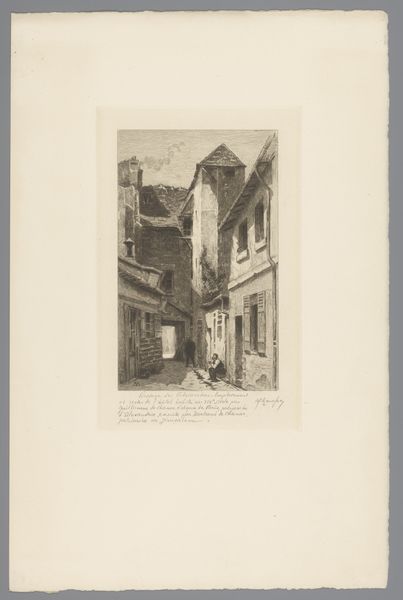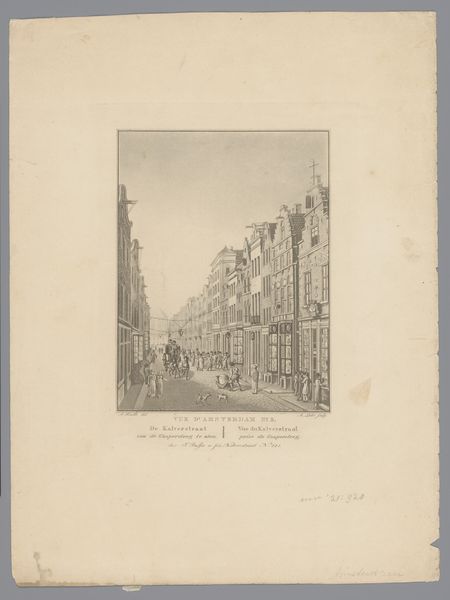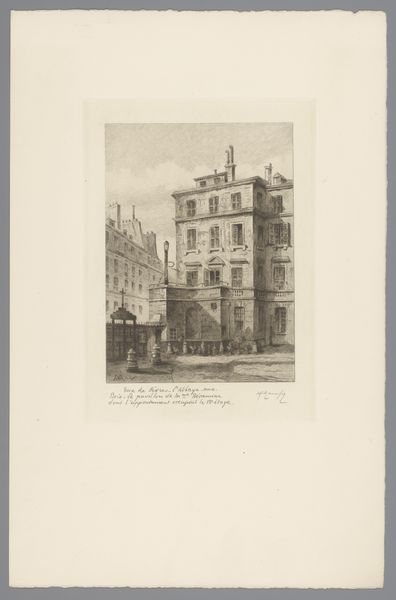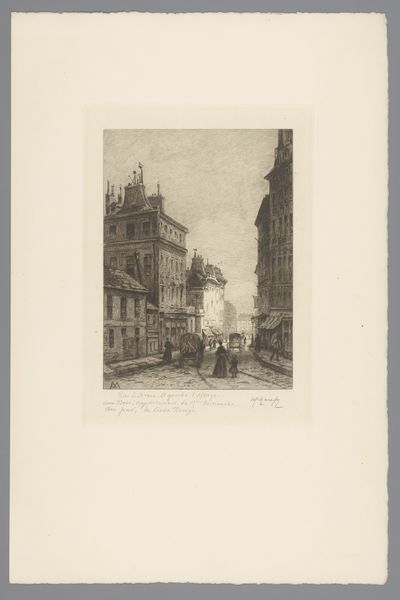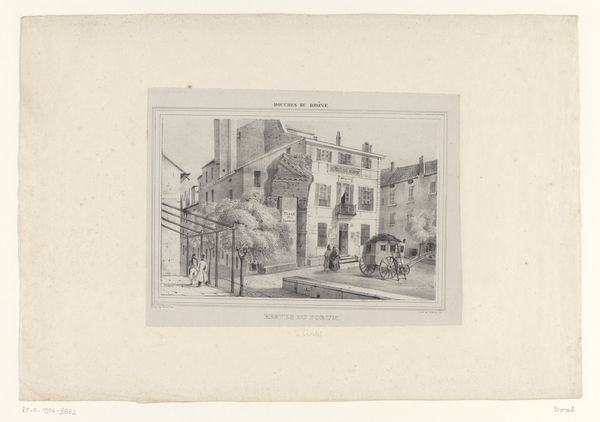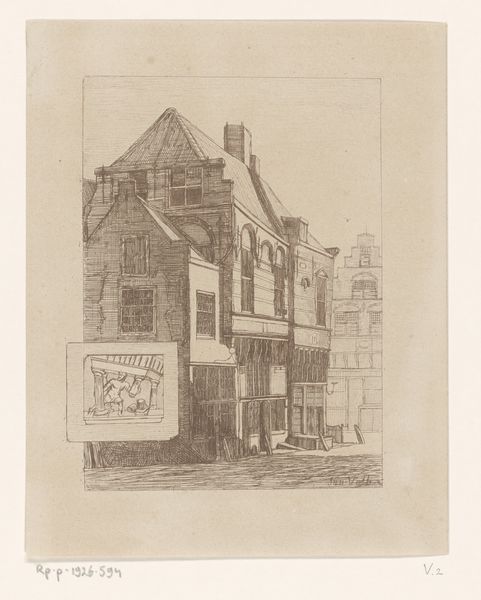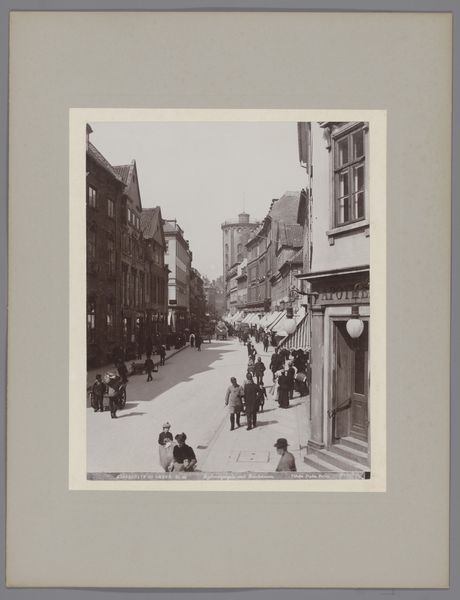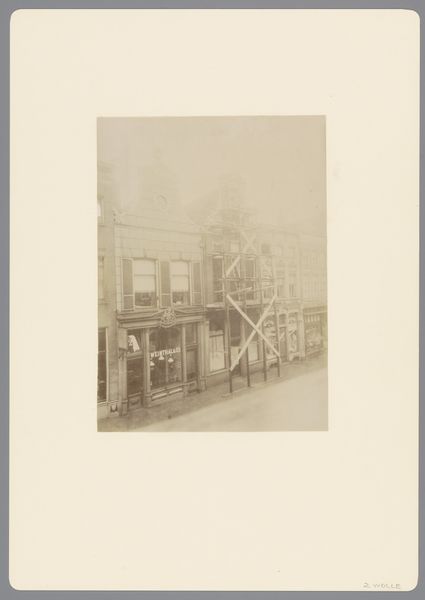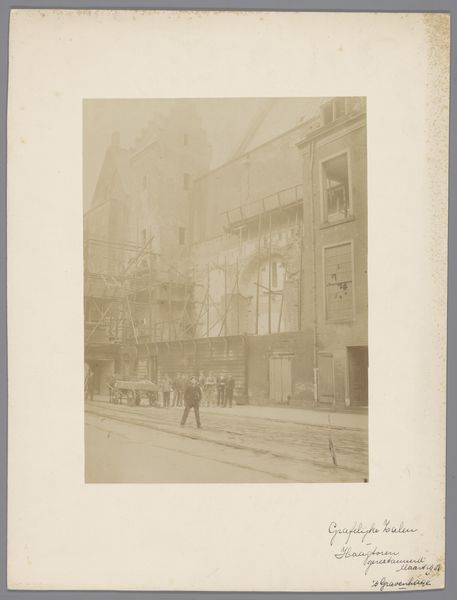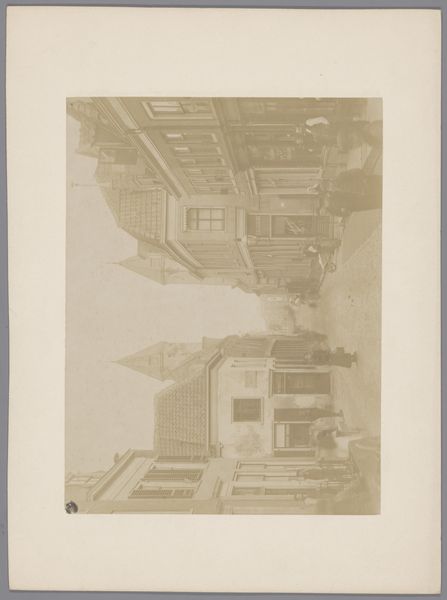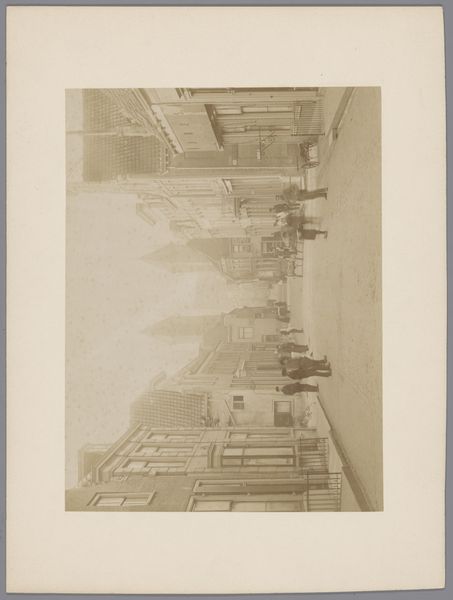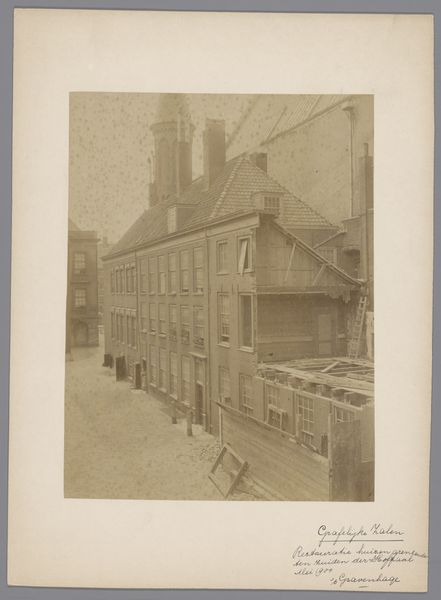
print, etching, intaglio, paper, graphite
#
aged paper
# print
#
etching
#
intaglio
#
paper
#
graphite
#
cityscape
#
street
Dimensions: height 274 mm, width 207 mm
Copyright: Rijks Museum: Open Domain
Curator: This subtle etching captures a slice of Parisian life from the turn of the 20th century, sometime between 1908 and 1911. It's titled "View of 284 rue Saint Jacques in Paris," and was realized by Henri Manesse. Editor: Immediately, I'm struck by how ordinary the scene feels. Not in a bad way, but it seems to capture a rather muted quietness of a day passing on this Parisian street corner. It also reminds me of Atget’s photographs, those unglamorous pictures of the city. Curator: Yes, Manesse clearly favored an unvarnished view. We're seeing the city not as a stage for grand events, but as a workspace, a living space for everyday people. You can see, even with a rather cursory glance, how small enterprises are claiming their piece of street-level space. Note the flower seller, seemingly a constant feature of that area. This speaks volumes of social conditions, doesn't it? The fact of small independent traders still existing even with emergent factory working. Editor: It definitely offers an unidealized vision. Look at the textures evoked: the rough stonework, the slightly aged paper giving the print a weathered feel that amplifies that sense of time passing. It speaks to the enduring quality of the mundane, perhaps. Curator: Indeed. Etching, with its fine lines and capacity for detailed shading, allowed Manesse to capture the nuances of light and shadow, further enhancing this textured impression you noted. Consider, for instance, how the play of light across the buildings suggests not just the hour of day but also the passage of time itself. Editor: Also the symbolism inherent in urban spaces, wouldn't you say? This crossroads, or, intersection represents choices, encounters, possibilities. Perhaps even representing, on a symbolic level, life choices available to those living through Modernity. I mean look at that large forbidding-looking gate and compare it to the stalls alongside it. Opposing visions? Curator: A fascinating observation, indeed. Looking at Manesse’s broader output, it seems his vision really wanted to convey not only a visual record, but perhaps a commentary on urban society in transition. He was showing the historical and societal changes around him. Editor: It makes me appreciate these quiet vignettes so much more. Each carefully rendered line tells a story, inviting us to contemplate the lives lived within these city walls. Curator: Absolutely. I feel, by presenting an image removed of grandiose statements or romantic flourishes, he forces the viewer to look for these more thoughtful connections you so rightly identified.
Comments
No comments
Be the first to comment and join the conversation on the ultimate creative platform.

